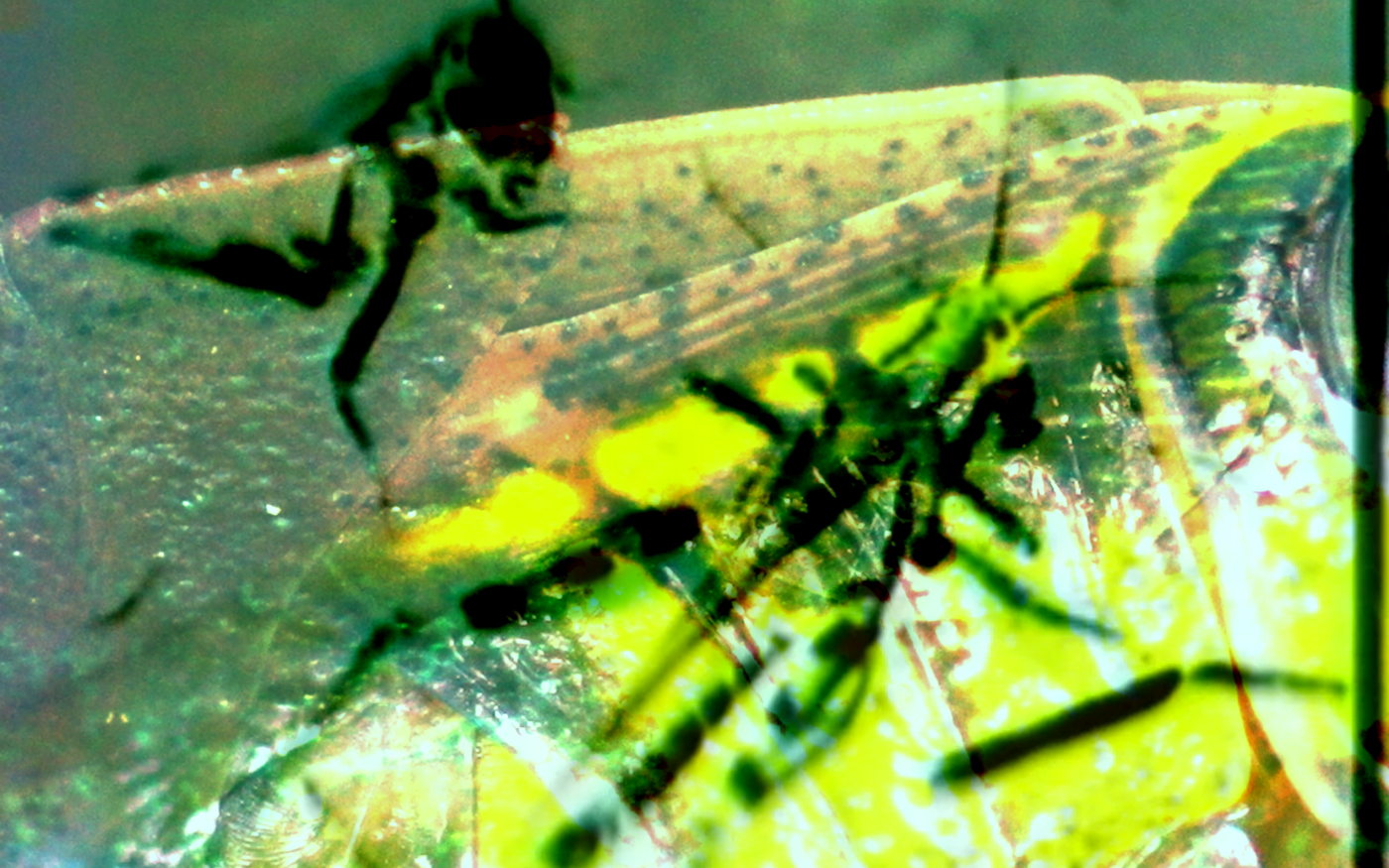Once upon a time in a meadow far away…the joint was jumping with life. Insects were calling, frogs croaking, the sounds of summer. But this symphony of small voices is rapidly being silenced.
A celebration of nature and a call to arms, in JUMP, field recordings of insects and amphibians become part of an exciting musical score, taking audiences on an enchanting musical journey into their world.
Written and performed by the hugely talented Karen Wimhurst, Karen introduces the audience to 9 creatures including crickets, grasshoppers and toads.
Each movement opens with a close imitation of the creature’s song, to be joined by Karen on live multi-tracked clarinet for a work that draws on classical and jazz in a hugely engaging duet.
Beautiful, vibrant videos, drawing on close up images of the amazing creatures heard in the music and created by multi-media artist Sonia Killmann, will accompany the performance.
JUMP is an act of artistic engagement with these disappearing voices, a moment of reimagining our human selves. Inspired as merely one small voice within nature’s vast soundscape.
Let’s move into a world in which we all leap, bound, hop, bounce, skip, bob, caper, trill, whirr, croak, buzz, chirp, squeak, chirrup and jump for joy with the best of them.
Many precious voices across the globe are vanishing fast. Hold on to them for dear life.
Jump is a musical collaboration between composer Karen Wimhurst, entomologist (insect expert) Peter Smithers hon. FRES and bio acoustician Charlie Woodrow.
Produced by Sound UK. Funded by Arts Council England.
“JUMP is a marvellous musical rendition of the sounds of nature. Karen’s performance masterfully captures the essence of the organisms each piece represents.” – Audience comment
CAST:
Bush cricket Supersonus aequoreus (and friends): This bush cricket produces the most ultrasonic love song known in nature, the males singing to females at a frequency far exceeding the limit of human hearing – 150 kHz.
Bush cricket Prophalangopsis obscura: Found in 1869 and unseen alive since, this species represents a unique member of a group of bush-cricket relatives which were dominant during the Jurassic.
Bog Bush Cricket Metrioptera barachyptera: This cricket is most abundant in southern areas of the UK. It is found in damp habitats in lowland areas
Midwife toad Alytes obstetricans: An introduced species that has established at a small number of sites across the east of the UK
SE Asian field cricket Teleogryllus emma: Known as Emma Koorogi. This cricket is common infields and other areas with short vegetation across SE Asia. It is often collected for its song.
Lesser mottled grasshopper Stenobothrus stigmaticus: This is a common grasshopper across the UK that is found in habitats with short vegetation and bare ground.
Cicada Neotibicen winnemanna: Known as Dog Day cicadas. A North American species that lives in deciduous woodland. The nymphal cicadas spend the autumn and winter underground emerging as adults in the summer.
Common toad Bufo bufo: This species is widespread in the UK and can be found in a broad range of habitats.
Poolfrog Pelophylax lessonae: This species occurs in a small number of sites in south eastern England. It prefers groups of small ponds in open woodland. The native populations had become extinct but a reintroduction program is underway.
Karen Wimhurst Homo sapiens: Often seen in summer in her native habitat, swimming in the River Stour Dorset or emerging with a clarinet in various locations in the UK and beyond.
https://www.sounduk.net/events/karen-wimhurst-jump/
Suitable for
Event type
Which insects?
Registration
Book online: https://www.sounduk.net/events/karen-wimhurst-jump/
Cost
Location
Mount Pleasant Eco Park
Chapel Hill
Porthtowan
Cornwall
TR4 8HL
United Kingdom
Website
https://www.sounduk.net/events/karen-wimhurst-jump/
Socials
Contact
Jamie Harber
[email protected]

